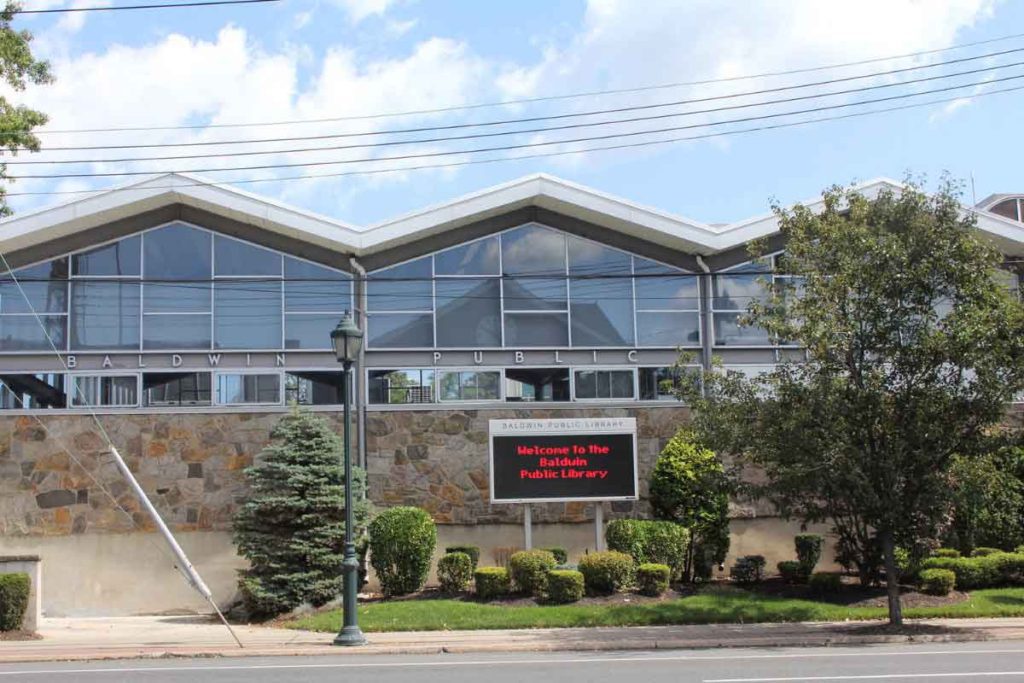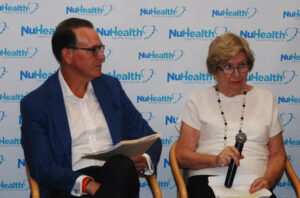By Matt Hughs
Editor’s note: Hughs first wrote this piece as part of his internship at Herald Community Newspapers.
With several locations that it delivers to in Baldwin, the Island Harvest food bank distributes food and helps facilitate food programs and education to “a network of 570 Long Island-based food pantries, soup kitchens and other non-profit organizations that offer feeding services for those in need.” Many in need require specific foods because of religious and dietary restrictions, and Island Harvest caters to these requirements.
Allison Puglia, Island Harvest’s chief program director, said the goal is to “end hunger and reduce food waste.” To achieve this, Island Harvest partners with farms, supermarkets and companies to receive excess food by donation or through payment. Island Harvest works with the direct providers of the produce to get as healthy food as possible.
In Baldwin, Island Harvest distributes food to St. Christopher’s Church, the Hatzilu Rescue Organization, Baldwin Union Free School District, First Bethel Church, Three Ds Aftercare and Halandia Shores, and partners with the Baldwin Public Library to serve breakfast and lunch to families in need on summer weekdays.
Kaysha Watson-Phillips, who organizes the Baldwin Public Library meals, said the number of children receiving food increased each week. Watson-Phillips also said the library promoted the meals by sending out email blasts and social media posts, and putting up posters and two large banners promoting the program outside the library. She added that the meal service is held at the library annually in the summers and is generally slow to pick up.
Distribution of meals at Baldwin Library began July 11 and ran through Aug. 12, from noon to 1 p.m., allowing children and families with children below age 18 to pick up bagged breakfasts, lunches and milk daily.
Watson-Phillips said the first day only four children were served, but that number increased to 28 or more.
Since its inception in 1992, Island Harvest has “delivered 130 million pounds of food, supplementing 108 million meals,” and Covid-19 accelerated its growth. “Island Harvest distributed 9.8 million pounds of food in 2019,” Puglia said. “In June 2020 to 2021 during Covid, we delivered around 18 million pounds of food.”
This is consistent with the organization’s 2020 Statement of Functional Expenses, which showed food distribution cost was $2.8 million, whereas in 2019 was around $1 million.
While there is more food being distributed, this also means there is a demand for this food from people in need. The poverty rate in Baldwin was 5.1 percent in 2019, but has since grown to around 6.4 percent, based on a five-year U.S. census estimate from 2017. It is likely even higher because the model did not account for a pandemic.
In 2019, Nassau had 19,488 children living in poverty, according to the Children’s Defense Fund of New York. Compared to 10 years ago, the county has also experienced a 12 percent increase in students receiving free or reduced price school lunch. Now up to 29 percent of all students in the county are using school meal plans.
The CDFNY also found that poverty is disproportionately skewed toward children of color, who make up 48 percent of the people below 18 in Nassau. An estimated 12 percent of Black and 15 percent of Hispanic or Latino children live in poverty, and they are four to five times more likely to be in poverty than their white and Asian counterparts.
The pandemic has likely made this worse. Puglia said Island Harvest only partnered with the Baldwin Union Free School District since the start of the pandemic, but may continue its partnership even after the pandemic is over.
Island Harvest is constantly looking for more support, especially for food that fulfills dietary constraints and volunteers to work towards its goal of ending hunger on Long Island. For more information about Island Harvest Food Bank, visit its website, IslandHarvest.org.
Poverty by the numbers:
-Baldwin poverty rate: 6.7%
-Economically disadvantaged students in Baldwin: 41%
-Children living in poverty in Nassau: 19,488
-Black children in poverty in Nassau: 12%
-Hispanic children in poverty in Nassau: 15%









